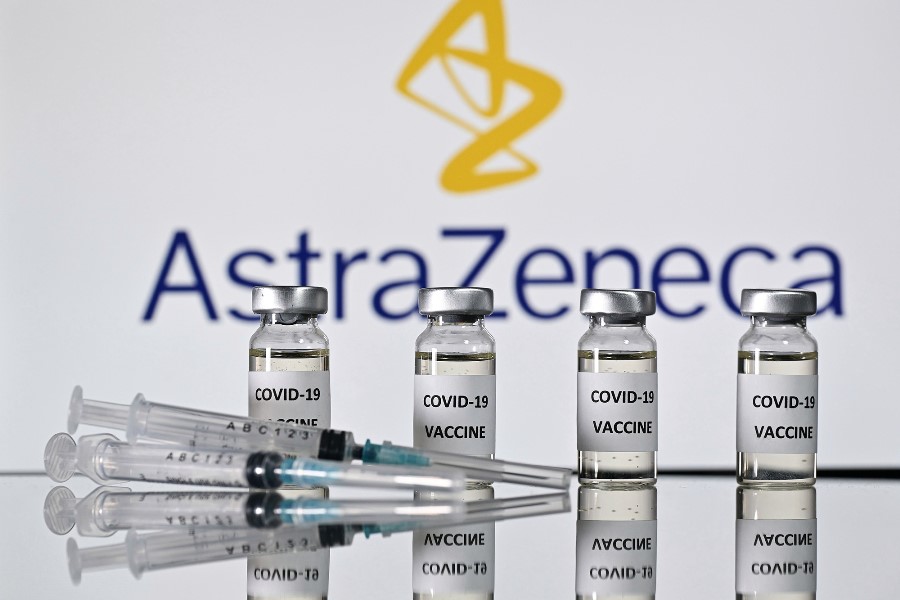The European Medicines Agency announced on Friday that it has approved the Oxford-AstraZeneca vaccine for use in the European Union.
The EU drugs regulator gave the vaccine approval for use of EU residents above 18 years old but member countries can still decide which individuals the jabs will be given after the approval.
The Covid-19 vaccine, co-developed by Oxford University, is the third to be approved by the bloc after the Pfizer and Moderna vaccines.
The EMA has recommended granting a conditional marketing authorisation for COVID-19 Vaccine AstraZeneca to prevent coronavirus disease 2019 (COVID-19) in people from 18 years of age. This is the third COVID-19 vaccine that EMA has recommended for authorisation.
The EMA’s human medicines committee (CHMP) has thoroughly assessed the data on the quality, safety and efficacy of the vaccine and recommended by consensus a formal conditional marketing authorisation be granted by the European Commission. This will assure EU citizens that the vaccine meets EU standards and puts in place the safeguards, controls and obligations to underpin EU-wide vaccination campaigns.
“With EMA’s recommendation today, we are further expanding the range of Covid-19 vaccines available to EU and EEA member states to bring the pandemic under control and protect their citizens,” Emer Cooke, Executive Director of EMA said.
“As in previous cases, the CHMP has rigorously evaluated this vaccine, and the scientific basis of our work underpins our firm commitment to safeguarding the health of EU citizens,” Cooke said.”
Combined results from four clinical trials in the United Kingdom, Brazil, and South Africa showed that the COVID-19 Vaccine AstraZeneca was safe and effective at preventing COVID-19 in people from 18 years of age.
These studies involved around 24,000 people altogether. Half received the vaccine and half were given a control injection, either a dummy injection or another non-COVID vaccine. People did not know if they had been given the test vaccine or the control injection.
“After evaluation of all available data EMA’s committee for human medicines has agreed that the benefits of this #COVID19vaccine outweigh the known and any potential risks in people from 18 years of age,” Bruno Sepodes, CHMP Vice-chair said in a statement.
“The evaluation of overall safety and efficacy was based on clinical studies that included 24.000 people. We will also soon receive additional data coming from a study currently ongoing in the US,” he added.
The safety of the vaccine has been demonstrated across the four studies. However, the Agency based its calculation of how well the vaccine worked on the results from study COV002 (conducted in the UK) and study COV003 (conducted in Brazil). The other two studies had fewer than 6 COVID-19 cases in each, which was not enough to measure the preventive effect of the vaccine. In addition, as the vaccine is to be given as two standard doses, and the second dose should be given between 4 and 12 weeks after the first, the Agency concentrated on results involving people who received this standard regimen.
These showed a 59.5% reduction in the number of symptomatic COVID-19 cases in people given the vaccine (64 of 5,258 got COVID-19 with symptoms) compared with people given control injections (154 of 5,210 got COVID-19 with symptoms). This means that the vaccine demonstrated around a 60% efficacy in the clinical trials.
Most of the participants in these studies were between 18 and 55 years old. There are not yet enough results in older participants (over 55 years old) to provide a figure for how well the vaccine will work in this group.
However, protection is expected, given that an immune response is seen in this age group and based on experience with other vaccines; as there is reliable information on safety in this population, EMA’s scientific experts considered that the vaccine can be used in older adults. More information is expected from ongoing studies, which include a higher proportion of elderly participants.
“I want to encourage people who have been vaccinated and their healthcare professionals to report any side effects with COVID-19 vaccines, which will be then collected and analyzed through the EU’s pharmacovigilance system,” Sabine Straus, PRAC Chair said.
“The PRAC’s focus during the evaluation was the risk management plan. It describes the safety profile of the vaccine, all measures needed to ensure that it is used in a safe way, and additional data and studies needed for its ongoing safety monitoring,” Straus added.
The Pharmacovigilance Risk Assessment Committee or PRAC is the EMA’s committee responsible for assessing and monitoring the safety of human medicines.
COVID-19 Vaccine AstraZeneca is given as two injections into the arm, the second between 4 to 12 weeks after the first. The most common side effects with COVID-19 Vaccine AstraZeneca were usually mild or moderate and got better within a few days after vaccination.
The most common side effects are pain and tenderness at the injection site, headache, tiredness, muscle pain, general feeling of being unwell, chills, fever, joint pain and nausea. The safety and effectiveness of the vaccine will continue to be monitored as it is used across the EU, through the EU pharmacovigilance system and additional studies by the company and by European authorities.
Read More Stories: Toyota is World’s No.1 Automaker, sold 9.5 Million Vehicles in 2020



